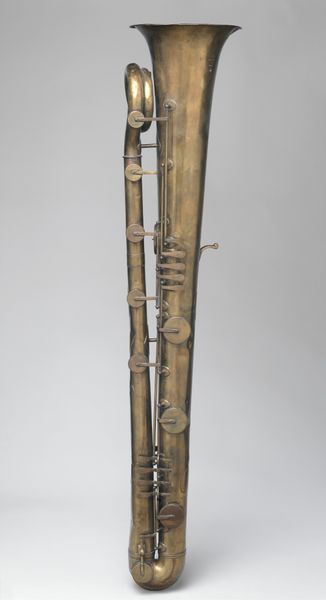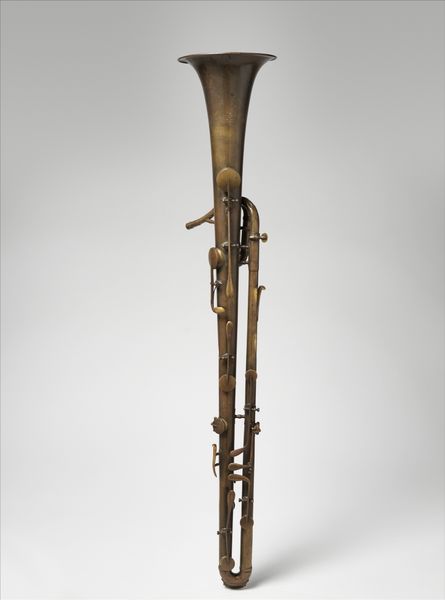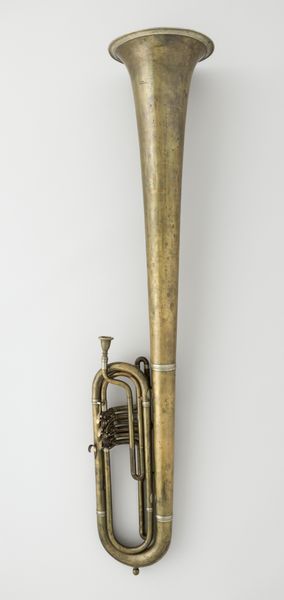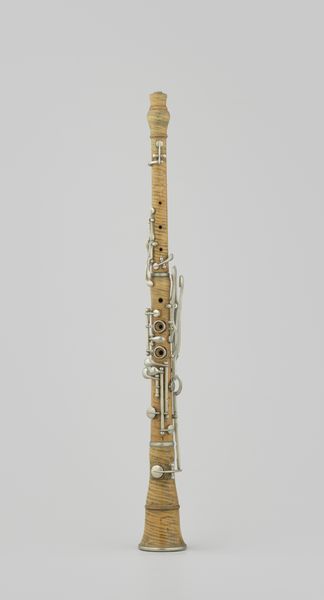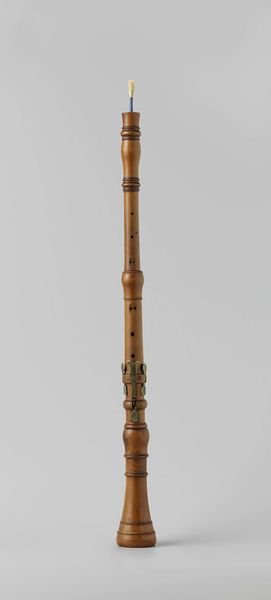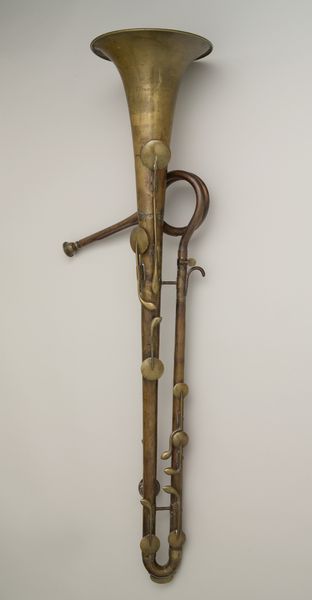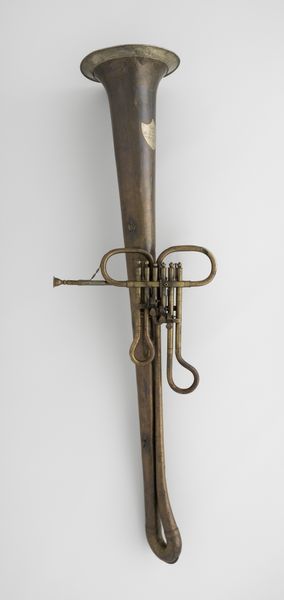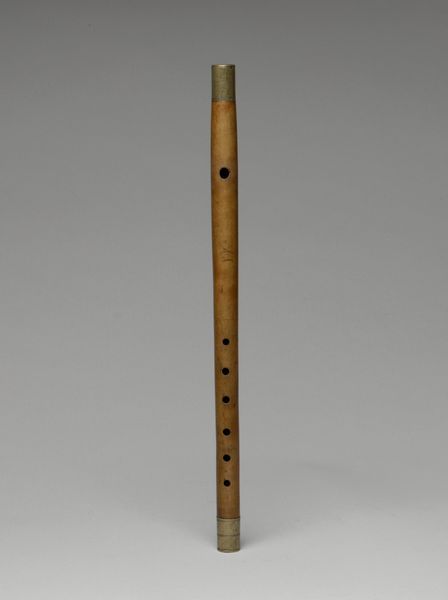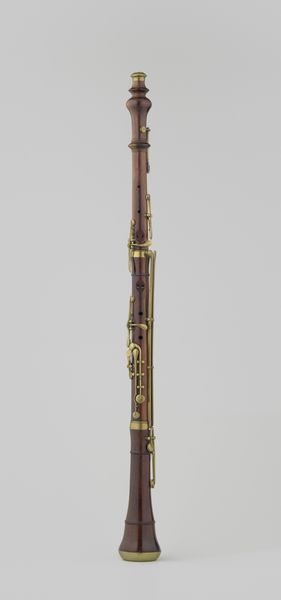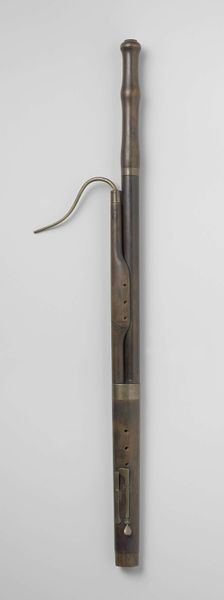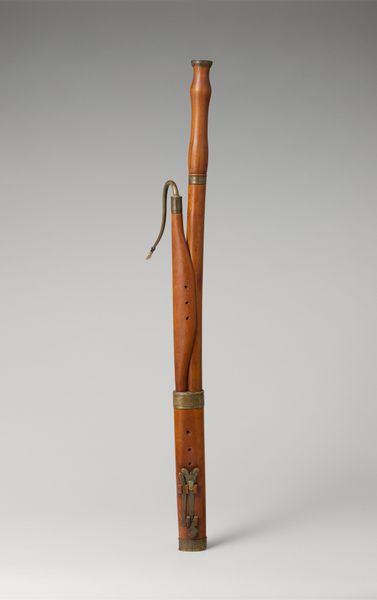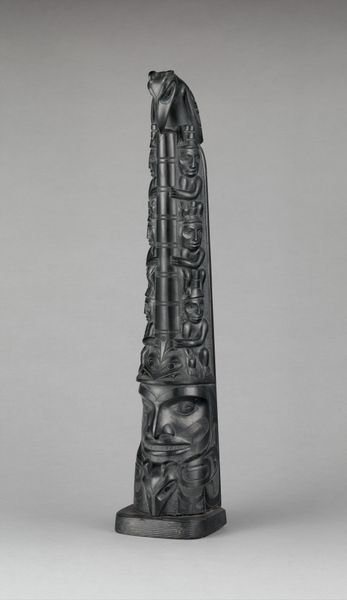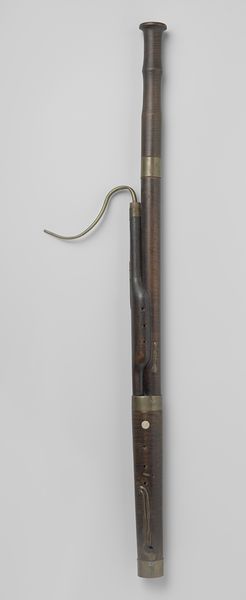
brass, sculpture
#
brass
#
sculpture
#
sculpture
#
musical-instrument
Dimensions: Overall: 18.9 x 89cm (7 7/16 x 35 1/16in.)
Copyright: Public Domain
Editor: Here we have Charles Joseph Sax's Tenor (Alto) Ophicleide in E-flat, dating from around 1840 to 1850, crafted from brass. Its intricate system of keys and valves is visually arresting; it’s like a beautiful machine. What do you see when you look at this, beyond the musicality? Curator: Well, immediately, I’m drawn to how this object embodies a specific moment in history, a convergence of craftsmanship, musical innovation, and burgeoning industrialisation. The Ophicleide was created during a time when composers were demanding instruments with greater agility and tonal range, which reminds us of a similar push in digital instruments. What purpose might such an ornate design serve? Editor: Maybe it also reflects the increasing role of music in civic life? Curator: Precisely! Think about the symbolic role of brass instruments – often associated with ceremony, military processions, and even religious contexts. There's an implicit association with power, fanfare, and public announcement that the opulent design reinforces. And brass as a material holds its own weight too - it lasts centuries, yet its composition and crafting are alchemical processes. Consider, also, how the valves—tiny sculptural mechanisms themselves—operate on principles of physics, like the hidden machinery in an automaton, so that this is far more than just decorative artistry. Do you see a parallel with any other instruments? Editor: I see connections with woodwinds; they share a similar system of keys and are also integral to Western orchestras, as well as chamber ensembles and smaller bands. I’ve not really thought about their broader social meanings! Curator: Indeed. Exploring an instrument's symbolism opens pathways into broader questions of cultural identity, technological innovation, and the human desire to create meaningful sound and beautiful objects. It is about culture and technology interweaving. Editor: Thank you for showing me these connections – now I understand this instrument is more than meets the ear! Curator: My pleasure; it is amazing how much objects can tell us about our past.
Comments
No comments
Be the first to comment and join the conversation on the ultimate creative platform.
